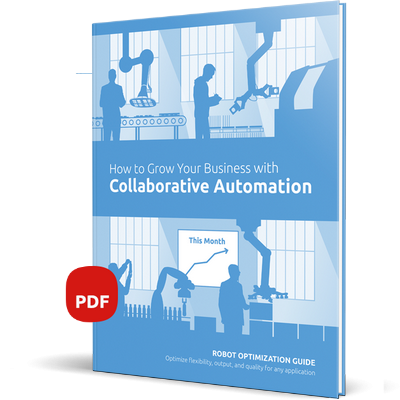#THOUGHTSONROBOTS: Wameq Kazemi


In this interview with OnRobot, Sales and Applications Engineer Wameq Kazemi from Freise Automation shares his views on the future for collaborative robot applications after COVID-19.
For Wameq Kazemi, there is no doubt COVID-19 will have a big impact on the use of collaborative robot applications in the future.
“In the short term, I believe it is currently possible to minimize the risk of infection in production facilities by using collaborative robot applications in order to maintain certain standards due to short-time work and to be able to complete the orders.”
“In the long term, I am firmly convinced that collaborative robot applications will be indispensable in the future in almost every industry, regardless of size. Since the corona crisis, at the latest, everyone has been aware that automation is a kind of safeguard. And the fact is that collaborative robots are crisis-proof and immune to viruses and diseases.”
Operation without risk of infection
As examples on industries where collaborative applications have enormous potential right now, Wameq Kazemi mentions the food industry and medical industry.
“In the food industry, special grippers for food such as the OnRobot’s Soft Gripper and automation solutions make it possible for start-up stations to be operated without the risk of infection for the specialist staff. In the care sector, I believe a lot will happen because the corresponding grippers and peripherals already exist.”
Potentials in many processes
Across industries, Wameq Kazemi believes the working processes that have the biggest potentials for collaborative robot applications are the ones which are currently performed manually and are monotonous or repetitive.
“That could be pick and place, palletizing, dispensing, machine tending, screwing, and assembling. Also, collaborative robot applications can do work steps that serve to qualitatively secure the production parameters, for example in order to reduce rejects.”
Quick and easy to install
Besides the multitude of applications, Wameq Kazemi emphasizes that a big advantage of collaborative robot applications is that many of them are easy and quick to deploy.
“If you target simple applications with a manageable complexity, the implementation can take only 1-2 days. For example, our HANWHA HCR collaborative robots require no previous knowledge in robotics or programming, and accordingly the systems are accessible and usable for everyone.”
Automation gets more important
Looking forward, Wameq Kazemi expects an increasing use of automation in both smaller and larger companies.
“The current pandemic will make collaborative robot and automation even more important, and companies will definitely start to invest more and increase the level of automation. Also, those who have relied on collaborative robots before the beginning of the crisis, currently have fewer problems.”
“There is a multitude of applications, and collaborative robots become increasingly more secure and versatile in their application. Nothing is impossible anymore.”
5 important tips to manufacturers
For manufacturers about to deploy a collaborative application, Wameq Kazemi has 5 important tips:
- Find the easiest application to get started
- Keep the complexity manageable
- The less human traffic, the less risk = the more reliable the process and the smaller the safety concept
- Provide a clean component feed and positioning
- Always do a risk assessment and get the application CE-certified
-----------------------------------------------------------------------
#ThoughtsOnRobots

|
如何使用協作式應用拓展業務
隨著更加智慧、更具自我調整工具的發展,機械人現在可以以更高的速度、強度、安全性和精準度運行,完成大量的任務,同時最大限度地提高投資回報率。透過下載我們的免費電子書,詳細瞭解如何以更低的成本實現更快的生產。
獲得免費電子書
|

|

